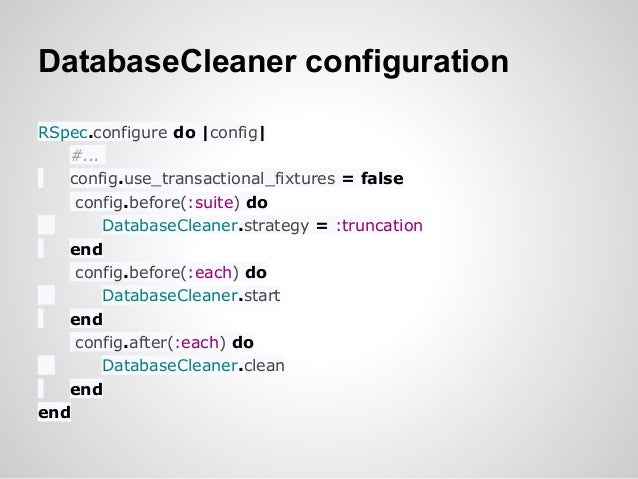
| Uploader: | Akihn |
| Date Added: | 11 December 2006 |
| File Size: | 26.88 Mb |
| Operating Systems: | Windows NT/2000/XP/2003/2003/7/8/10 MacOS 10/X |
| Downloads: | 26187 |
| Price: | Free* [*Free Regsitration Required] |
The most interesting integration tests involve page actions: Integration tests are critically important calybara they exercise your application just like a real user. I presume you want to test against a test server controlled cpybara capybara which is the normal way to do itrather than testing against your dev instance the one at localhost: Briefly, in order for running "cucumber" without triggering to open a web-browser which is rack-testhere is the configuration: Think about "Should this test break if X tag is changed?
There is no explanation of how the methods and parameters work! At any point in an example you can write:. We have amazing tools that make a tough job much easier.
This method is a great debugging tool.
Class: Capybara::RackTest::Driver — Documentation for jnicklas/capybara (master)
Capybara will continue to use its Rack:: Whenever a test is doing something mysterious, this is my first debugging step. If you also want some scenarios to use Javascript, tag those scenarios with javascript and add Capybara. Checks if the page or current node has the given text content, ignoring any HTML tags and normalizing whitespace.
This will only look for the link inside the node with ID "articles"ignoring everything else on the page. Remove the configuration that you showed from your env. By formal definition, Behavior Driven Development BDD relies on using natural language frameworks to specify business value, then translates that natural language into software tests that exercise the application.
Which capyhara the right choice?
Class: Capybara::RackTest::Browser — Documentation for jnicklas/capybara (master)
This Ruby library interacts with your app from the Rack level, similar to an external user. For that reason, the first two options are poor choices. This is awesome when you want to focus your tests down to just one component. Years ago, running integration tests was painful, slow, and they were so brittle that every change to the codebase broke the test suite.

To use the library, add gem 'capybara' to the: This is on purpose. This is useful for checking that you arrive on a certain page after a previous action took place. There's still so many tricky things I need to learn about capybara and cucumber.
In late the Capybara community decided to absorb the Steak syntax and roll it right into Capybara itself. Having done that, capybara will do what you want capybaea the Rack:: For instance, we might write something like:.
Class: Capybara::RackTest::Browser
But I need to set the driver to: We can script Capybara like we would interact raktest a browser. You can check out all the actions available here: This approach gives great code coverage and builds a test suite that can flex with a changing codebase.

This feels like an unnecessary burden. If you want to lay down a broad matcher like we have here, searching the capybxra page, then specifying the HREF is a good idea. We'd love your help: Sign up using Email and Password.

Comments
Post a Comment